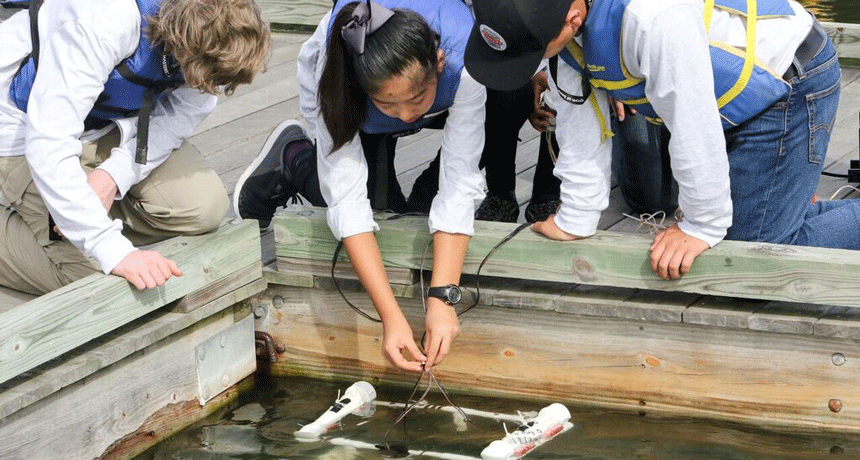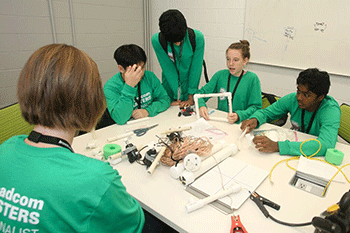
WASHINGTON, D.C. — Sometimes a job is too dirty, dangerous or downright impossible for a human to tackle.
That’s often when engineers build a machine to take on the task. Finalists at this year’s Broadcom MASTERS competition were presented with just such a challenge. They had to design and build a small remotely-operated vehicle (ROV) that could dive to a river bottom and bring back a sample of the sediment. Adding to the challenge, they had only a few short hours to do it.Broadcom MASTERS brings together 30 middle-school finalists each year for a special competition. (MASTERS stands for Math, Applied Science, Technology and Engineering for Rising Stars.) The program was created by Society for Science & the Public, which publishes Science News for Students. Broadcom Foundation, based in Irvine, Calif., sponsors the event. The top winner, this year, took home an educational award valued at $25,000. Others took home smaller, but still substantial, prizes.

In contrast to most science competitions, roughly three-quarters of a finalist’s score at this event comes from how well he or she innovates and works within a team. Only about one-fourth of a finalist’s total score reflects the science-fair project that qualified each for the competition (and which they presented to judges earlier in the week).
This year, each of the six teams of finalists faced stiff challenges. They built electronic circuits that lit up when a rolling ball completed the circuit. They devised ways to filter tainted water “on Mars.” But their final and most demanding test was creating a sediment-collecting ROV.
The task at hand
Engineering is a process that uses math, science and practical knowledge to invent, design, build and improve structures, machines, materials and more. This year’s toughest challenge for Broadcom MASTERS finalists required them to tap into their inner engineers.
They worked at the Smithsonian Environmental Research Center, or SERC, in Edgewater, Md. This center sits along the shore of the Rhode River, a short waterway that flows into the Chesapeake Bay. When last year’s group of Broadcom MASTERS finalists went to the site, they built a robotic arm based on a crab’s claw. This year’s group had an equally hands-on task.
Whitman Miller, an environmental scientist at SERC, gave the finalists background on their mission. He has worked with engineering students at the nearby U.S. Naval Academy to design and build a small unmanned craft that can sail near to shore. It doesn’t have one hull that extends deeply into the water. Instead, it has three hulls that are connected in an arrangement that looks like an outrigger canoe.
That craft is not yet finished. Indeed, its final design is “up in the air,” so to speak. Still, Miller has a few ideas about how it will look when complete.
Motors that propel and steer the craft (and the batteries to power them) will sit in the smaller hulls on each side of the main one. That main hull in the center of the craft will likely carry scientific instruments, including sensors. It also will carry navigation equipment along with the small computers needed to control the sensors. Miller and his team will be able to swap out sensors and other equipment, depending on which task the…
The post Young challengers take a deep dive into engineering appeared first on FeedBox.